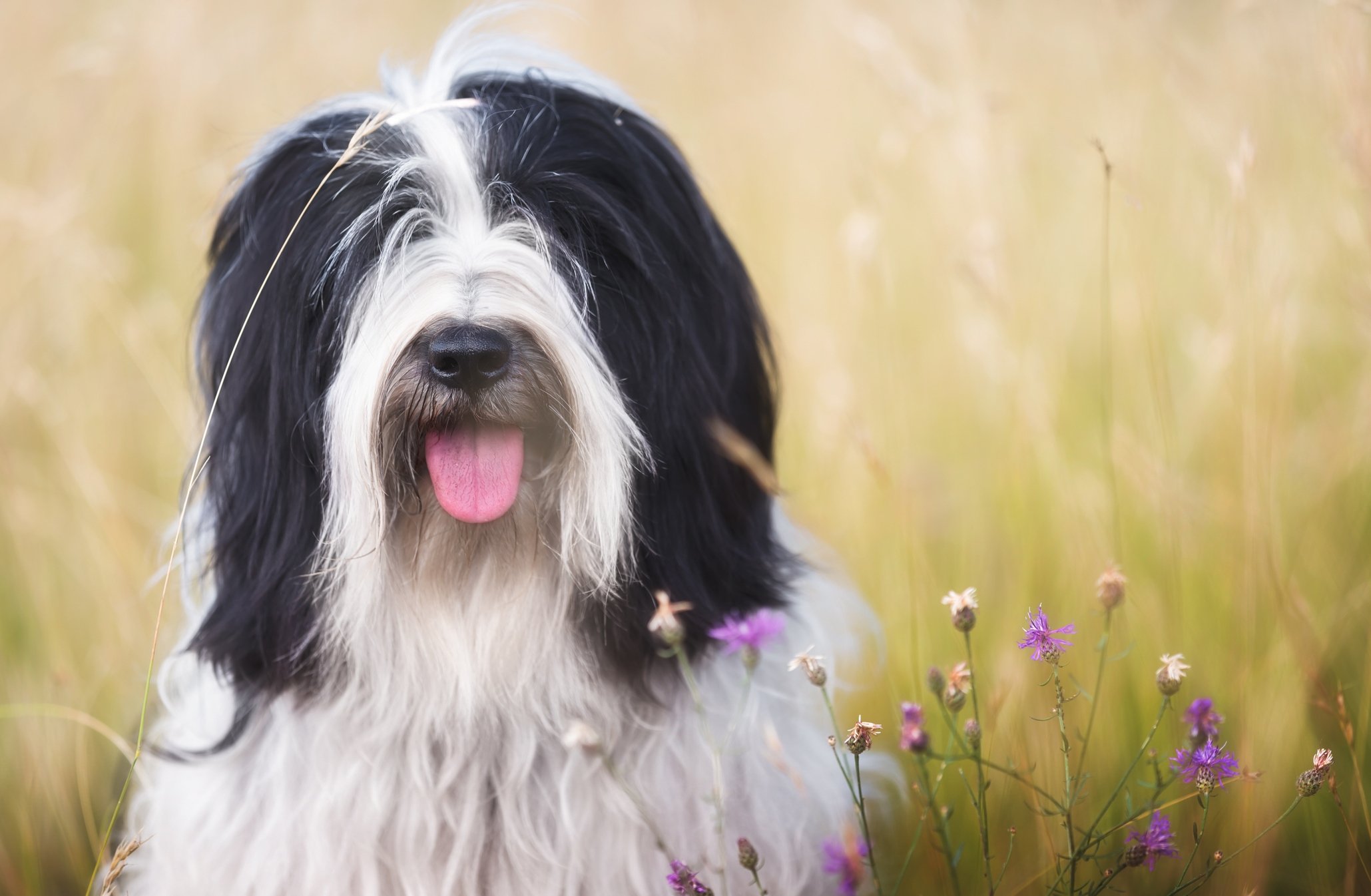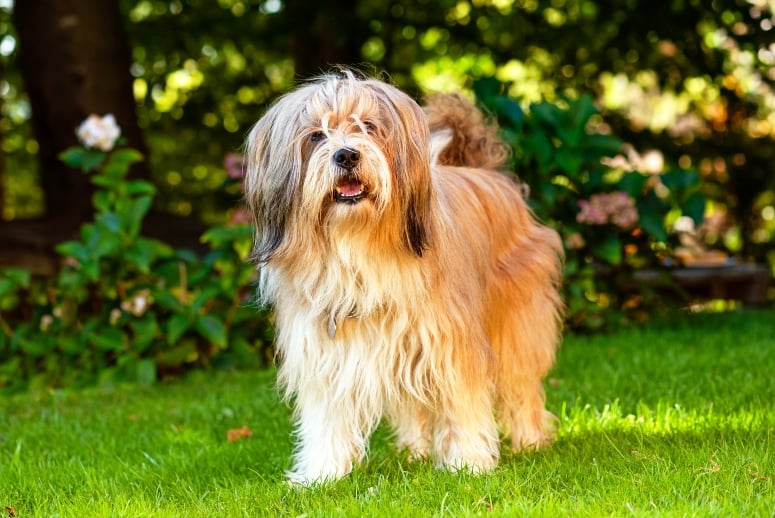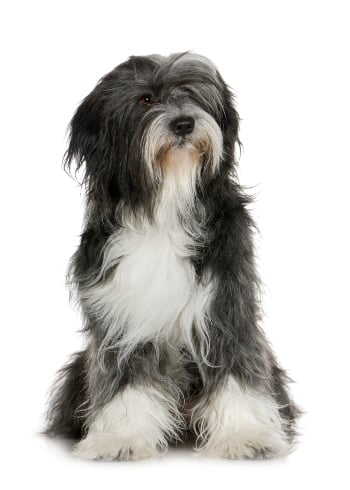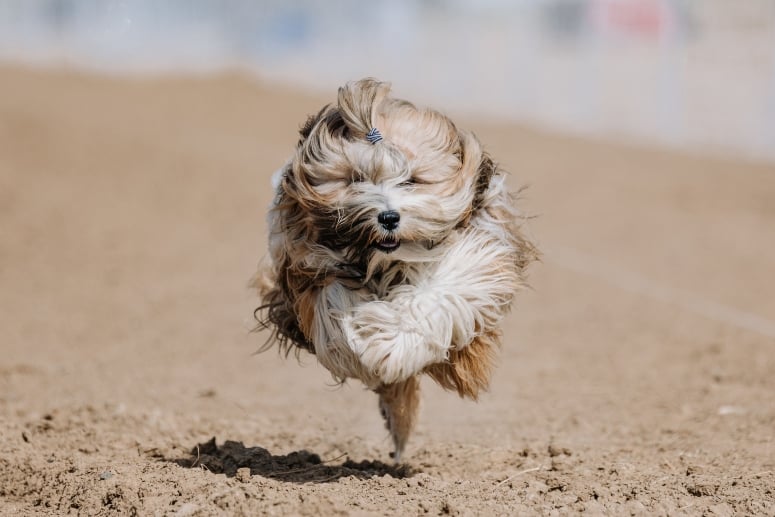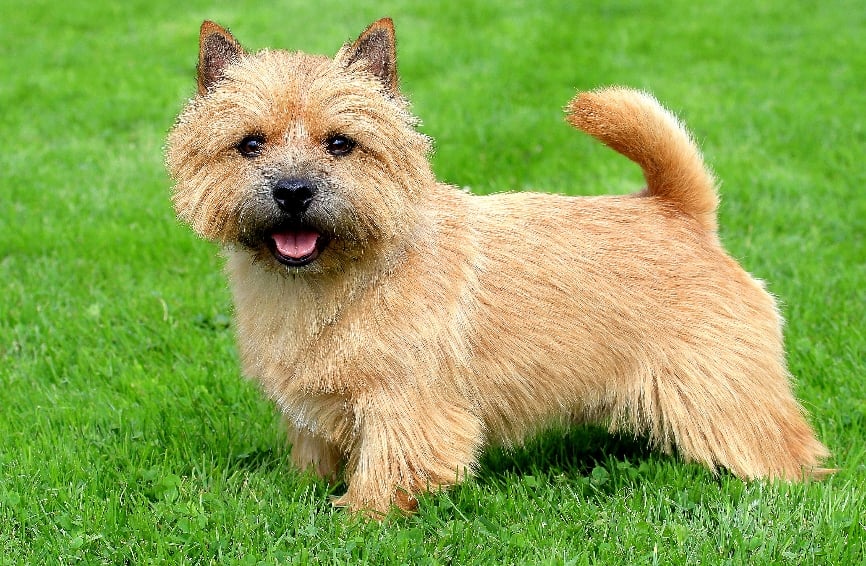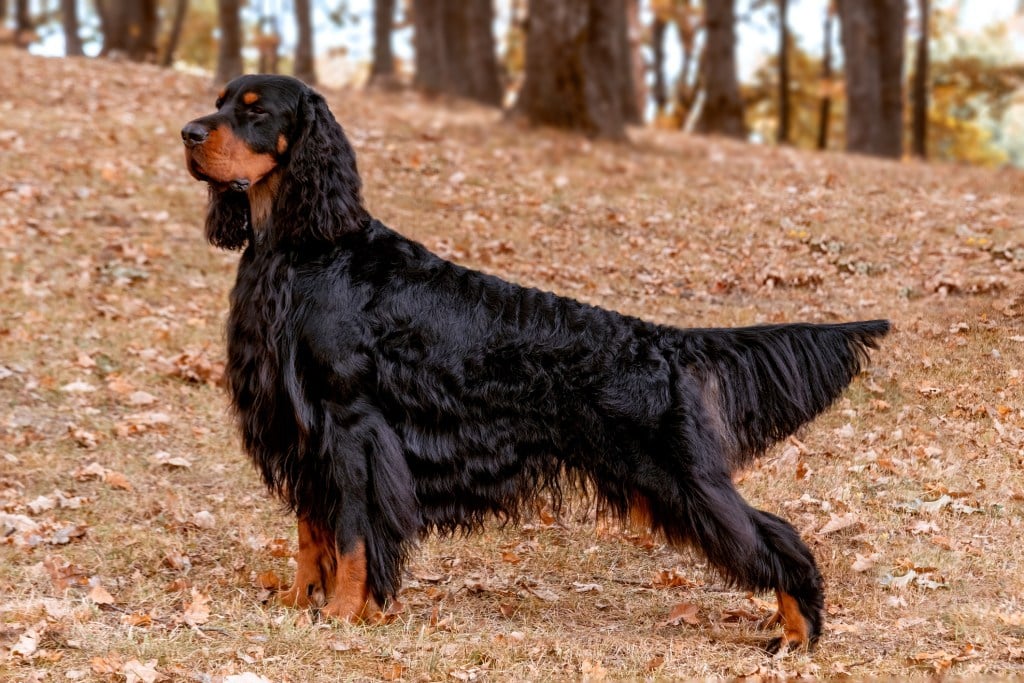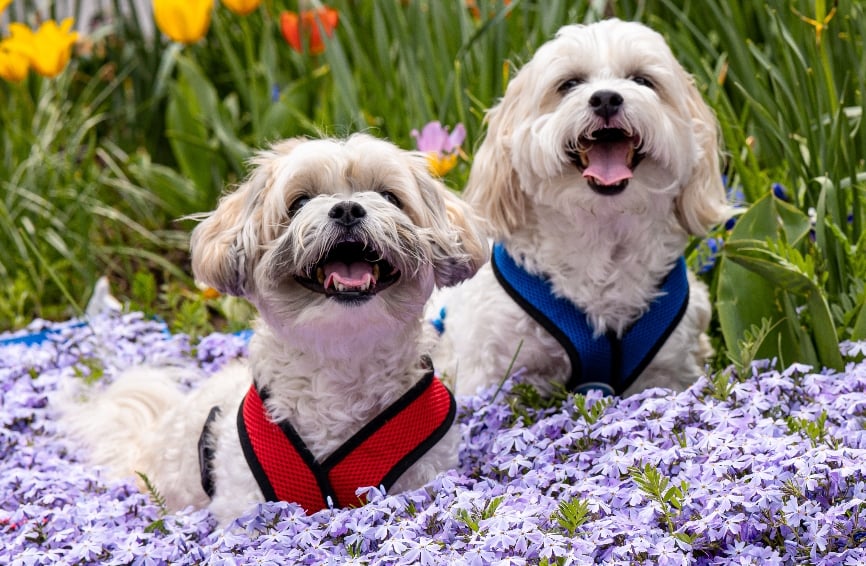Table of Contents
Introduction to Tibetan terriers
Tibetan terriers are non-sporting group dogs that are affectionate and sensitive. Interestingly, despite their misleading name, they aren’t actually terrier dogs at all.
With a long lifespan and small/medium size, these ancient watchdogs have beautifully profuse coats with a long outer layer of fine hair. While they once served as Buddhist monk companions and guard dogs for herdsmen, they are beloved family pets in many households today.
Are you ready to bring a Tibetan terrier into your home and life? Read this Healthy Paws breed guide to learn more about Tibetan terriers and how to take the best care of their health for many wonderful years together.
Size of Tibetan Terriers
Adult male Tibetan terriers weigh 18 to 30 pounds when fully grown, with females just slightly smaller than males. The dogs stand 14 to 17 inches tall at their final height.
Here’s how big you can expect your Tibetan terrier to get as the dog grows from puppyhood to adulthood:
| Weight Chart | 3 months | 6 months | 12 months | 24 months |
| Male Tibetan terriers | 8-14 lbs. | 13-21 lbs. | 17-30 lbs. | 19-30 lbs. |
| Female Tibetan terriers | 8-13 lbs. | 13-20 lbs. | 16-28 lbs. | 18-29 lbs. |
Characteristics of Tibetan terriers
The Tibetan terrier’s gentle and loving but independent demeanor makes this breed unique. The breed is highly adaptable and especially great for serving as therapy dogs. These dogs can be wary of strangers but love “their” people and generally get along well with older children.
Tibetan terriers thrive on affection and the company of people they know and trust. Therefore, they do best in households where someone is around most of the day..
As you get to know a Tibetan terrier’s personality, here’s what you can expect based on the breed characteristics:
| Breed Characteristic | Level (High, Medium, Low) |
| Affectionate with People | High |
| Good with Kids | Medium |
| Good with Pets | Medium |
| Need for Exercise | Medium |
| Energy Level | Medium |
| Intelligence Level | High |
| Able to Be Trained | High |
| Amount of Barking | Medium |
| Amount of Shedding | Medium |
History of Tibetan Terriers
The Tibetan terrier is among the oldest dog breeds in the world. Historians believe they existed as far back as over 2,000 years ago after being bred in the remote monasteries in Tibet. In the Himalayan Mountains, the monks kept them as companions and good luck charms. For this reason, they earned the nickname “holy dogs of Tibet.”
In ancient times, people gave the dogs as gifts to preserve luck rather than selling them. Nomadic herdsmen used the breed to protect their herds and keep watch at night in the harsh, high plains. The dogs’ snowshoe-like feet helped them move over the snowy and mountainous terrain of their homeland.
A European breeding program began in the 1920s when an English doctor, Agnes R.H. Greig, received a Tibetan terrier as a gift. The breed made its way to the U.S. in the 1950s and was recognized by the American Kennel Club in 1973.
Tibetan terrier standard information
The parent breed club established a standard for Tibetan terriers to describe the ideal characteristics of this dog. For example, a Tibetan terrier should have a compact size, double coat, and uniquely shaped feet. These agile dogs should also be devoted companions to the people they love.
Here is an overview of the breed standard information for Tibetan terriers:
Head:
- Medium length head
- Lower jaw with a small beard
- Tight scissors bite, tight reverse scissors bite, or level bite
- Large, wide-set, dark brown eyes
- Heavily feathered pendant ears
- Black nose
Neck, Topline, Body:
- Neck length proportionate to body and head
- Compact body that is strong and square
- Medium-length tail that is heavily furnished
Forequarters:
- Shoulders slope and are well-muscled
- Legs straight and strong
- Feet are large, flat, and round
- Strong and thick pads
- Hair between toes and pads may be trimmed
- Dewclaws may be removed
Hindquarters:
- Legs well-furnished with well-bent stifles
- Thighs are broad and well-muscled
- Hocks are low set and turn neither out nor in
- Feet and dewclaws are the same as in front
Coat:
- Double coat
- Soft and wooly undercoat
- Profuse and fine outer coat
- Can be straight or wavy
- Long coat but shouldn’t hang to the ground
Color:
- No preferred colors, as all are acceptable
Gait:
- Free, effortless stride
- Good reach in front
- Flexibility in the rear
- Great agility and endurance
Caring for Tibetan terriers
Although Tibetan terriers enjoy going outside with their families, these are indoor dogs that should mostly remain inside the home. They need moderate exercise daily and require regular grooming but are otherwise generally easy to care for. It is common for these dogs to have bursts of energy but then like to relax and snuggle with their favorite people afterward.
Here are some general tips for taking the best care of a Tibetan terrier:
Best Living Environments:
- Apartments are fine
- Mostly time spent indoors
- Families with older children and other pets are okay
- Best in households with people at home during the day
Type of Exercise:
- An hour of exercise daily
- Can be broken into a few 20-minute walks
- Playtime in a fenced yard
- Allow playtime in the snow
Mental Enrichment:
- Playtime with family members
- Toys and treats for rewards
Training Strategies:
- Use positive reinforcement during training
- Provide treats, toys, and affection as rewards
- Training can begin at seven weeks old
Grooming Tips:
- Brush hair
- Trim hair short to prevent tangles and mats if regular brushing is difficult
- Use detangling spray as needed
- Often tracks dirt and debris in from the outside
- Clean the coat if it is messy after eating
- Grooming is more time-consuming than with many breeds
- Trim nails about every three weeks or as needed
- Clean ears as needed
- Brush teeth daily
Common health problems of Tibetan terriers
Tibetan terriers often have a long life span of 15 to 16 years. However, they still develop certain health conditions due to how they’ve been bred, old age, or bad luck. To take the best care of your Tibetan terrier and ensure you can afford the necessary veterinary care, many pet parents enroll their canine companions in a pet health insurance policy.
These are some of the most common health issues that arise with Tibetan terriers:
- Hip dysplasia
- Hypothyroidism
- Luxating patella
- Progressive retinal atrophy
- Cataracts
- Heart murmur
- Deafness
- Neuronal ceroid lipofuscinosis (central nervous system disorder)
Diet and nutrition for Tibetan terriers
Most adult Tibetan terriers will thrive when eating a high-quality, nutritionally complete and balanced dog food. Puppies should eat puppy food until they are around 12 months old. If you feed homemade dog food, make sure you are working from a recipe that is designed by a veterinary nutritionist and is appropriate for your dog’s age and health status.
Feed the amount of dog food needed to keep your pet slim. You should be able to see your dog’s waist and feel (but not see) their ribs without having to press too hard. In general, puppies need more calories per day than do adults, but a dog’s needs will vary with his or her activity level and other factors. Don’t leave food out all day for a Tibetan terrier to graze on. Divide the total amount of food for the day into at least two meals for adults and three to four meals for puppies. Place the food out in a bowl at approximately the same time of the morning and evening each day.
Special dog foods are available if your Tibetan terrier is overweight or has a sensitive stomach. Talk with your veterinarian about portion sizes and food types as your dog transitions from puppyhood to adulthood and the senior years.
Where to adopt or purchase Tibetan terriers
The Tibetan Terrier Club of America, formed in 1957, is the AKC parent club for the breed. This organization has a website with resources for accredited breeders and information about the dogs’ health.
It is also possible to adopt a Tibetan terrier needing a loving home. The parent breed club has a rescue program and application you can complete to find an adoptable dog. Other adoption resources include Trisong Tibetan Terriers and Pumik and Rescue Me!, which offers a map showing Tibetan terrier dogs available by state.
Related breeds
If a small to medium-sized, lovable dog with luscious hair is just your type, you might be interested to learn about other similar and related breeds to the Tibetan terrier. Here are some breeds to consider before deciding on a new pet.
- Shih Tzu
- Löwchen
- Tibetan spaniel
- Polish lowland sheepdog
Pet insurance for Tibetan terriers
To help your Tibetan terrier live a long, healthy, and happy life, consider pet insurance for your dog through Healthy Paws. Our Tibetan terrier insurance plan covers accidents, illnesses, hereditary conditions, breed-specific conditions, cancer, emergency care, and alternative care.
We have one easy-to-understand policy with no costly add-ons and let you choose whichever veterinarian you trust for your Tibetan terrier’s care. These incredible dogs deserve all the love and care you can offer, and pet insurance is one way you can provide this to them when they need you most.
For your online Tibetan terrier quote, please tell us a few details about your pet or call us at 855-898-8991.
